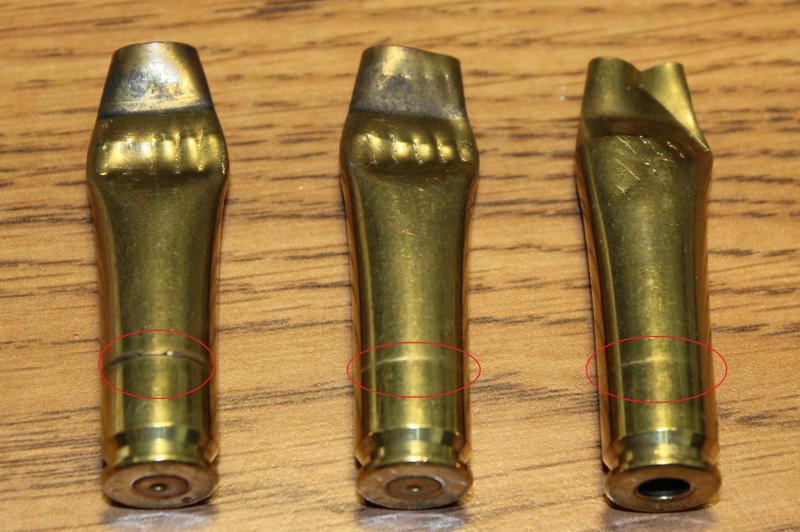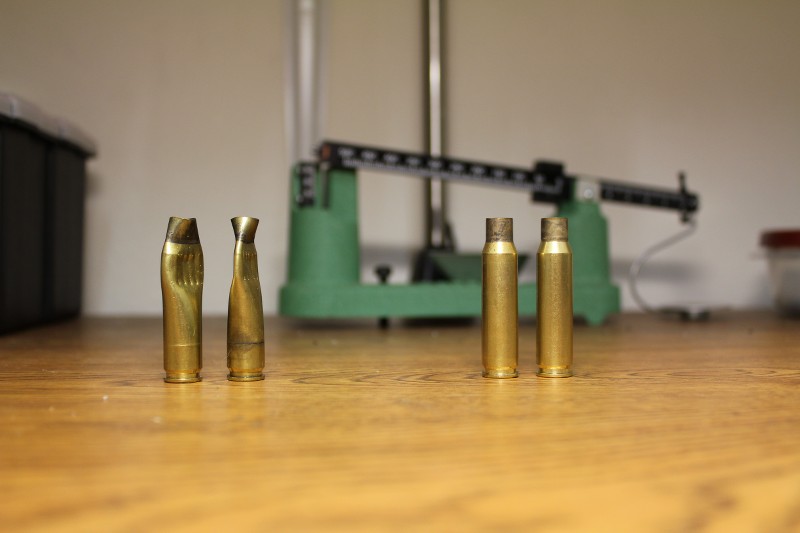for a new guy should I worry about this or just do what I have been doing?
Yes and maybe yes .
Lets start with bumping the shoulder back . First you need to understand why if at all you need that . When you fire a bottle neck case it expands to fill the chamber . Brass has elasticity so after fully expanding to your chamber it will spring back just a tad and that allows you to extract the case . It is that spring back that allows you to only neck size because that case will still fit in your chamber .
Now after neck sizing a few times in a row the case will have expanded/stretched to a point that extraction is harder do to it sticking in the chamber . This is because they no longer spring back as much and stay pressed against the shoulder & bolt face as well as the chamber walls . Those same cases will be hard to re-chamber as well if you only neck size again .
At that point you will need to FL size the cases in order to get them to freely chamber in the rifle again . FL sizing reduces the diameter of the case body as well as "bumps" the shoulder back all in one process .
OK now to the interesting part . The term FL sizing , Some say a case is only FL sized if it is returned to SAAMI minimum . The thing is most of us don't need that in order to get those expanded cases to chamber freely again . In fact you often just need the shoulders to be "bumped"/ pushed back .002 or so to get that to work . While a true FL sizing will likely push your shoulder back .006 to .010 which will result in excessive head clearance in the chamber .
So how do you know what .002 bump is you ask ?? Well you need a comparator of some type . This is a device that allows you to measure your fire formed cases . The measurement you want is from the head to the datum point on the shoulder . The datum point "is" a specific point on the shoulder of most bottle neck cases , It's usually somewhere in the center of the shoulder .
I use the Hornady head space comparator
http://www.midwayusa.com/product/47...-headspace-gage-5-bushing-set-with-comparator
You can make home made ones using spent cases like 40cal for 308 or 3/8" bushings/spacers that will preform the same function .
That function is NOT to measure the head to datum point but to COMPARE your fired cases to your FL sized cases . You first measure your fire formed cases . Lets say the measurement you come up with is 1.628 . Now that you have your fire formed case measurement you now know what to FL size your case to . If your fire formed case is 1.628 and you want to bump your shoulder back .002 . You will want your FL sized case to measure 1.626 using the exact same comparator you used to measure the fire formed case . Remember you are comparing one to the other . If you use two different tools , inserts , spacers , or cases you will get different measurements with each .
I hope that explains bumping the shoulder and some of FL sizing . Now to FL sizing to much meaning bumping the shoulder .006+ then is needed to get your case to chamber freely . When the firing pin hits the primer it pushes the cases fully forward until the case shoulder stops on the chamber shoulder ( non belted rimless bottle neck cartridges ). If your cases is sized from datum to shoulder really short . When the case is pushed forward it will leave a gap between the head and the bolt face of that same distance-ish resulting in excessive head clearance . Now when the case expands it will stick to the chambers wall leaving that space between the head and bolt face . The resulting pressure in the case will force the head of the case back up against the bolt face . But wait how can this be if the case body it firmly stuck to the chamber walls ? Well it forces the case to actually stretch rather the slide back . This stretching happens at the web of the cases where the case wall start to become thinner then they are closer to the head .
If you continue to size your cases smaller then needed . They well continue to stretch in that area resulting in the wall getting thinner and thinner after each firing . This thinning is what you can feel when sliding a sharp pick inside the cases . This thinning of the case wall will result in case head separation .
I hope that helps explain a few things you were not to clear about . I've now wrote so much and it's taken so long that I'm not remembering what all I've said and there has likely been 5 other members posts since I started writing . So I'll stop here and answer any questions to what I posted if need be




